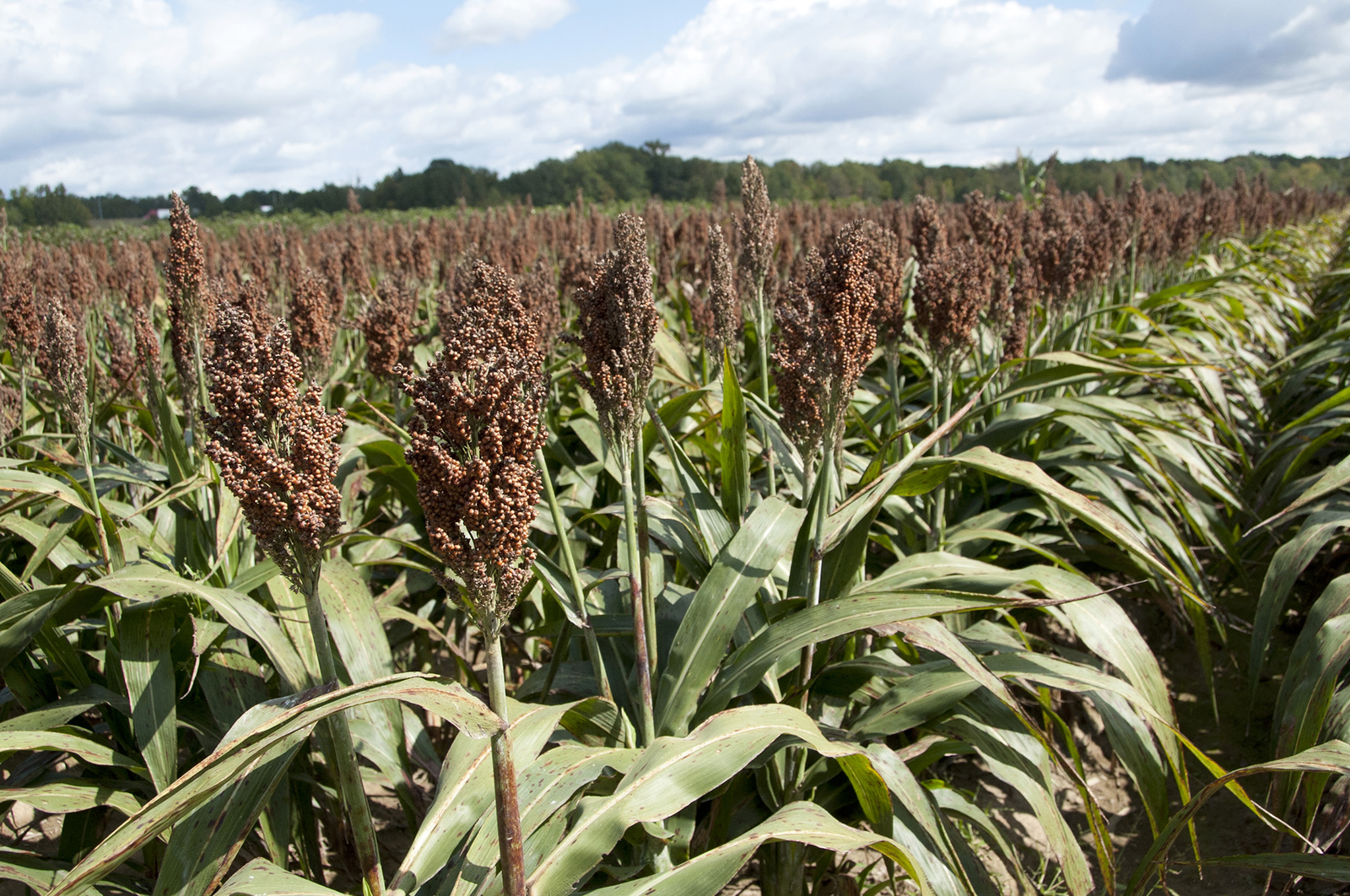Low tannin sorghum has potential for poultry feed

Research at the University of Faisalabad has shown that one major drawback of sorghum, the contents of feed intake reducing tannins, is not as large as formerly considered. Especially white sorghum with low tannins is recommended for poultry diets.
Growing demand for cereal grains for food, feed and biofuel production have forced the prices upwards, making it highly volatile. Motivated by the need for more stable sourcing, the Department of Poultry Science, University of Agriculture, Faisalabad in Pakistan focused on sorghum as an alternative feed ingredient to replace wheat and maize.
Availability and a relatively low price give sorghum good cards as an ingredient for poultry feed. However, there is an issue of tannins in the product. Some varieties of sorghum, with high tannin levels are a real no-go for the poultry diet, but that leaves a lot of varieties which can be interesting. The University of Agriculture, Faisalabad, Pakistan sees a bright future for sorghum. Research on seven sorghum varieties and extensive testing on poultry flocks has shown that low tannin sorghum are a good substitute in the diet for wheat and maize. The researchers concluded that:
- The use of low tannin sorghum varieties is recommended for the production of eggs with low cholesterol for the cardiac patients.
- Use of sorghum grain tannin up to 1% level is recommended in poultry diet.
- Dietary inclusion of high levels of sorghum tannins (2-3%) may be avoided unless treated for alleviation or deactivation of tannins.
Sorghum (Sorghum bicolor) is an important cereal grain for human and animal consumption throughout the world. Grain sorghum and maize (corn) are comparable in costs of production and in nutrition, therefore the growing environment is the largest determining factor for choosing which to grow. Grain sorghum requires less water than corn, so is likely to be grown as a replacement to corn and produce better yields than corn in hotter and drier areas. One study showed that when corn required over 30 inches of water, sorghum required less than 23 inches. However, in cooler areas corn is probably a better option for production, based on yield.
Total sorghum production is forecasted at 61 million tonnes in 2012, which makes it the fifth important grain after corn, wheat, rice and barley. In regions such as Asia, Africa, Russia and Central America, sorghum grains are mostly used for human consumption, whilst in South and North Americas, Europe and Australia, it is mainly used for animal feed. In Pakistan, wheat is the staple food followed by rice but there is considerable fluctuation in production and supply throughout the year. Self-sufficiency rates switched between below and above 100% through the years. At present wheat is an important ingredient in poultry feed. However, due to the rise in wheat price and uncertainty in the market availability of feed grade, wheat became uneconomical. Sorghum, with adequate crude protein (8-12%) and high amount of carbohydrates (65-80%) offers a good substitute for wheat and maize thanks to its availability, low price and limited human consumption. The latest annual sorghum production in Pakistan is estimated at 145,000 tonnes.
Tannin effects
One of the major limiting factors for using sorghum in animal feed is presence of anti-nutritional factors especially trypsin inhibitor and condensed tannins. The effects of tannin are particularly severe in monogastric animals like poultry, where anti-nutritional factors reduce growth rate of the birds by limiting the availability of certain nutrients e.g. protein and carbohydrate in the gut. The severity of the impacts depends upon the amount of tannins present in the diets. Diets with high tannins may lead to decreased feed intake and body weight in layers. Tannin levels between 1.5% and 3% cause depressed growth rate and may decrease egg production. A high mortality rate was observed in chicken when tannin constituted 3-7% of the diet. Tannins seem to reduce laying rate, egg weight and body weight in hens and ducks.
Seven varieties of sorghum grown in Pakistan were analysed for their tannin contents. The concentration of tannins in these varieties ranged from 0.02% to 5.34% with the change in colour of the testa of the grains. The grains with white testa (white sorghum) showed the lowest amount of tannin while the tannin contents tended to be higher with darker colour of the seed coat.
Tannin level is crucial
Presence of tannins in the diet reduced feed intake, live weight gain, egg production, egg size and feed efficiency per dozen eggs and per kg egg mass. The effects were stronger when the level of tannin in the diets was higher. The minimum feed consumption was observed in the birds consuming 3% tannins, while the maximum feed consumption was observed in the birds consuming a tannin-free diet. The overall egg production and egg weight was minimum in birds consuming 3% tannins. The poorest feed conversion ratio was observed in birds using 3% tannin. However, feed conversion ratio of birds consuming 1% tannin was similar to those consuming a tannin-free diet. The inclusion of sorghum tannins exhibited significant effects on eggshell thickness and egg breaking strength. The minimum mean value for eggshell thickness and egg breaking strength was found in group using 3% tannins while the maximum value was in the tannin-free diet group. Similar observations were recorded regarding the effects of tannins on egg albumen quality and yolk index values.
Dietary tannins caused an increase in the incidence of blood and meat spots, whereas pigmentation of leg, beak, and egg yolk was decreased. These effects intensified when the level of tannins was higher. The lowest pigmentation of leg, beak, and yolk observed in birds using 3% tannin in their diet was due to the lack of xanthophylls pigment in sorghum grains. The concentration of egg cholesterol was significantly reduced in tannin fed birds as compared to those fed a tannin-free diet. The serum total protein, albumin and globulin values were also affected by tannin-containing diets. Reduction in these values was observed with a higher level of dietary tannin. The increased level of tannin resulted in a higher concentration of liver enzymes due to abnormal metabolism of the liver. However, tannins did not exhibit any effect on growth hormones.
Join 26,000+ subscribers
Subscribe to our newsletter to stay updated about all the need-to-know content in the feed sector, three times a week. Beheer
Beheer









 WP Admin
WP Admin  Bewerk bericht
Bewerk bericht